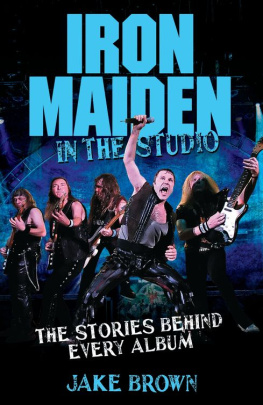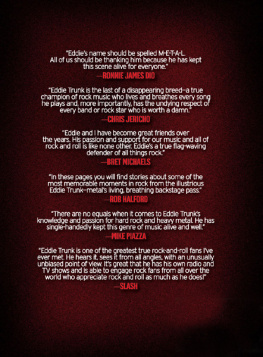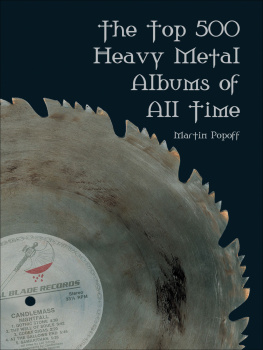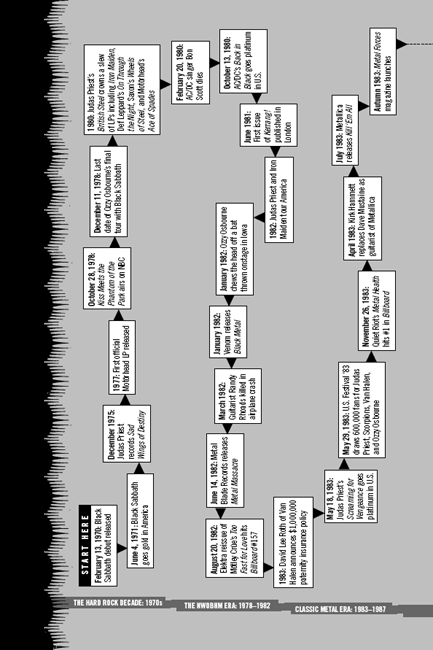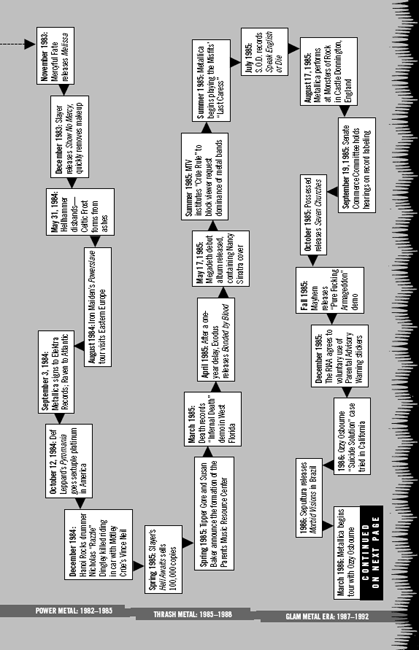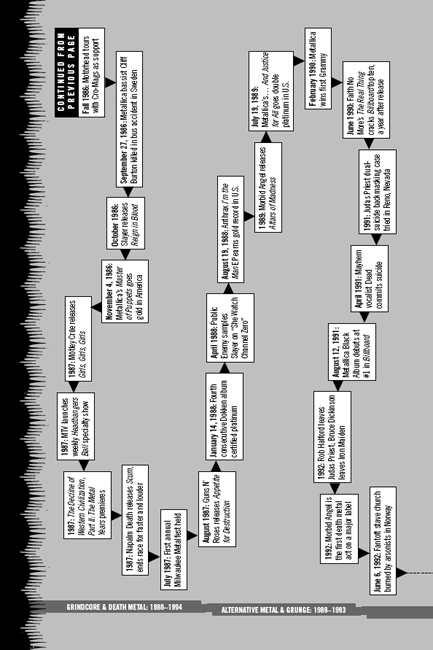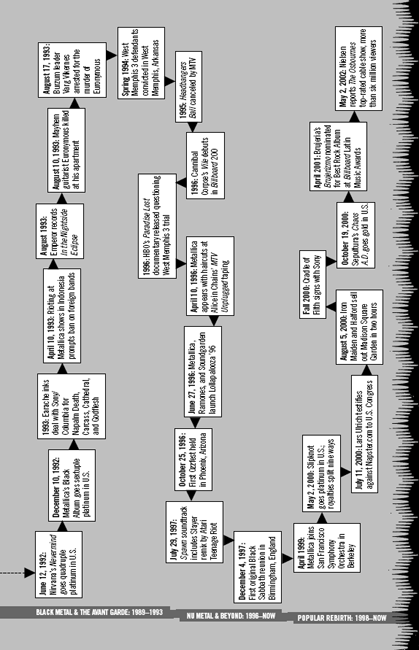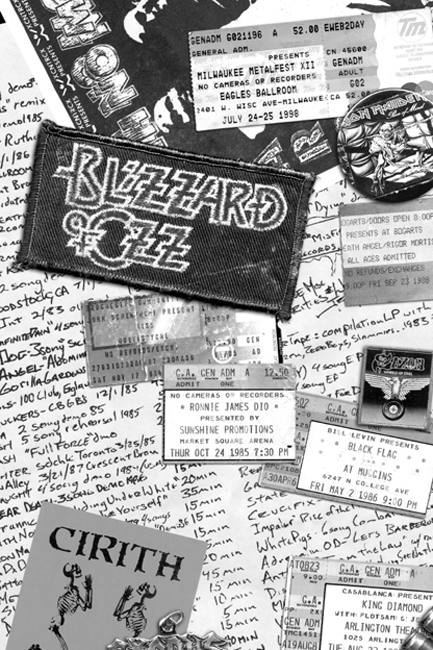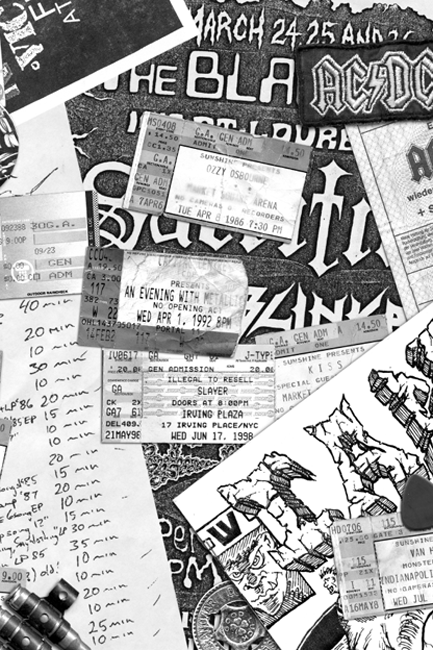I n the beginning there was just a shadowy expanse of night sky and unknown. There in disquieting oblivion whirled the unanswered secrets of history, animated by forces as ancient as civilization itself everything smoking, silvery, religious, and dark. These strong currents often lay forgotten and docile, until the opportunities of war, crisis, and anguish called forth their awful powers. They had no sound or definition of their own until trapped and subjugated by the epiphany of Black Sabbaththe wise innocents, the originators of heavy metal.
From the start Black Sabbath voiced powerful passion from beyond the perimeters of popular opinion. They were prophets bred from the downside of English society, the unemployedpeople regarded as morally suspect and of negligible social worth. The four members all were born in 1948 and 1949 in Birmingham, England, a crumbling factory town surviving an age when Europe no longer prided itself on industry. Singer John Michael Osbourne, aka Ozzy, was one of six children and a convicted thiefhe worked sporadically in a slaughterhouse. Guitarist Tony Iommi, the son of a candy-shop owner, was a mischievous enigma who had lopped off two right-hand fingertips in a metal-shop accident. The bands strange bassist, Terry Butler, aka Geezer, was known for an extravagant, green-colored, secondhand wardrobe. As indicated by the elegant disarray of his playing, drummer Bill Ward turned to music out of self-described frantic desperation. Coming of age in the years following World War II, the four were surrounded by the bombed-out rubble left by massive Nazi bombing raids. In the world they inherited, the only action worthwhile was to become professional misfits and adventurers.
Under the name Polka Tulk, nicked from a Birmingham rug merchant, Ozzy and company followed the path blazed by bands like the Yardbirds, Ten Years After, and Cream, jamming endlessly and loudly on standards written by American blues artists. The mournful sound was reshaped drastically in the journey from Birmingham, Alabama, to Birmingham, England, where disarming blue notes were grotesquely warped by factory-strength amplification and the late-1960s bohemian drug scene. After switching their name to Earth, the quartet achieved greater notoriety through their blinding volume and stage show.
Then came the breakthroughthe spontaneous creation of the song Black Sabbath. It was a pivotal new beginning for the band and fundamental to all heavy metal forever after. Here was a song based on only three tones, two of them D notes. Recounting the crisis of judgment day with fearsome suspense its narrator gasped: What is this, that stands before me? Figure in black, which points at me . Floating on feedback drones, the dimensions of the songs horror grew and galloped into life at the climax, as doomsday ultimately consumed the unwilling protagonist. It was a grim tale worthy of Edgar Allan Poe, told through the new ravens quills of guitars, drum, and crackling microphone.
Black Sabbath inspired immediate awe and captivated audiences completely. The song also had an irreversible effect on the bandwho in the midst of drug-tinged innocence suddenly felt their hands being drawn toward brilliance by an unseen force. Thus inspired, the ensemble soon broke free of its surroundings, departing from rock and roll to further explore the recent musical liberations of genre breakers like Miles Davis. Along with the doomy Warning, a jam inherited from the hip blues group Aynsly Dunbars Retaliation, Black Sabbath became the centerpiece of a new sound, a locus of auditory mortal dread that required the band rechristen itself Black Sabbath.
Departing from the world around him, Tony Iommi took music from the past with little concern for tradition, blazing through blues scales with his own timing and finesse. In order for him to bend guitar strings expressively without experiencing pain in his cropped fingers, the group tuned to a lower key signature. Prolonged by the timeless sustain of Iommis masterful notes, the results brought an inspired deepness to Black Sabbath. Thus, almost by accident, from sacrifice came a devastating sound. So from his deformity came a strange beautyand a bond to three-fingered Gypsy guitarist Django Reinhardt, one of Iommis many unusual inspirations.
Behind Iommis versatile guitar, Black Sabbaths rhythm section propelled its endless stream of mighty riffs with frantic breakbeats and galvanic accents. Bill Ward claimed that Black Sabbath never played in time but maintained unity by massive empathya sixth sense that encouraged the gravity of the music and drew the spectator inward. The wall of sound thus created was overpowering yet frenzied: Old films show Ward and Geezer Butler bobbing like hyperanimated marionettes in the hands of God.
Glee-stricken young ringmaster Ozzy Osbourne eased audiences into the new paradigm by clapping his hands, dancing, and nodding in charismatic contrast to the musics stony visage. Decadent and out of it, but not yet bloated or drug-addled, Ozzy pierced the heaviness behind him with his pissed-off wail. His schizophrenic vocal technique came from doubled vocalsone high and one lowspaced an octave apart. As the band tuned lower, Ozzy sang higher. Whatever rock-star swagger Ozzy possessed was swallowed by the intense purpose of the band, balanced with the too-real personal delirium of Butlers lyrics: I tell you to enjoy life / I wish I could but its too late.


